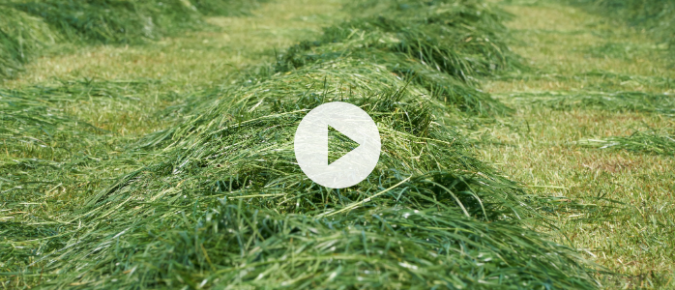July is National Corn Month! Watch this new Bumper Crop video highlighting and appreciating one of America’s most versatile and essential crops and current research exploring the future of corn production.
Michael Geissinger and Chris Clark, outreach specialists for the UW-Madison Extension Nutrient & Pest Management Program, meet at the field to talk about micronutrient deficiencies including how to assess if your crops have micronutrient deficiencies and research on whether or not applying foliar micronutrient fertilizer in season can correct them.
The July 10 Badger Crop Connect webinar featured Jose Franco, a research agronomist with the U.S. Dairy Forage Research Center (USDA). Jose summarized current research efforts at the U.S. Dairy Forage Research Center on cover crops and continuous living cover. Ongoing research includes cover crop breeding efforts, work on alternatives to winter cereal rye following corn silage and some of the benefits of including flowering cover crops, and a whole systems approach to dairy forage systems evaluations.
The July 10 Badger Crop Connect webinar featured Dane Elmquist, a conservation cropping outreach specialist in the UW–Madison Division of Extension Agriculture Institute. Dane gave an overview of the Wisconsin Cover Crop Citizen Science network and highlighted project results. He also showcased the project’s interactive data dashboard and provided information on how to participate in the project for the 2024-2025 season.
From severe drought to flooded fields, Wisconsin’s forage producers are turning to forage species that can provide adaptability and flexibility in the midst of abnormal conditions. We jump in with Yoana Newman, UW-River Falls professor and Extension forage specialist, and Matt Oehmican, from Short Lane Ag Supply, to talk the details of warm season annual forages, from the decision-making process for growing these species to the unique technical agronomy management warm season annuals need to grow in Wisconsin.
The June 12 Badger Crop Connect webinar features Dr. Natasha Rayne, a new Extension faculty specialist in soil fertility. Dr. Rayne introduces us to her and her work and research in soil fertility.
The June 12 Badger Crop Connect webinar features Chris Clark, an outreach specialist in NE Wisconsin with the UW–Madison Extension Nutrient and Pest Management Program; Chris presents about pre-sidedress nitrate and plant tissue testing to help you capture a nutrient deficiency you don’t know about in your field this season.
Farming is a business that cannot avoid weather risks. A significant challenge farmers face is dealing with excessive water, especially flooded and saturated soil.
Various soil and environmental factors such as soil texture, pH, cation exchange capacity (CEC), soil moisture, relative humidity and windspeed at the time of and directly following application affect ammonia volatilization. This article reviews soil properties and environmental factors that affect ammonia loss (AL) from surface applied urea and discuss management strategies to reduce AL from applied urea-based fertilizer.
The use and adoption of technology in crop production continues to accelerate as new tools are introduced to the marketplace at relatively affordable prices. The options and applications for precision agriculture technology during the planting season are extensive. To better understand the options available and their potential benefits we must be familiar with them and how they work.
Like gas and groceries, the cost of trucking and raising dairy heifers out West has gone up. Does this present Wisconsin farmers with an opportunity to lure these animals back to the state with low-input approaches and similar performance standards with well-managed grazing?
The May 8 Badger Crop Connect session features Chris Bandura, Extension’s Conservation Cropping Outreach Specialist, speaking about nitrogen rate and timing considerations.

















